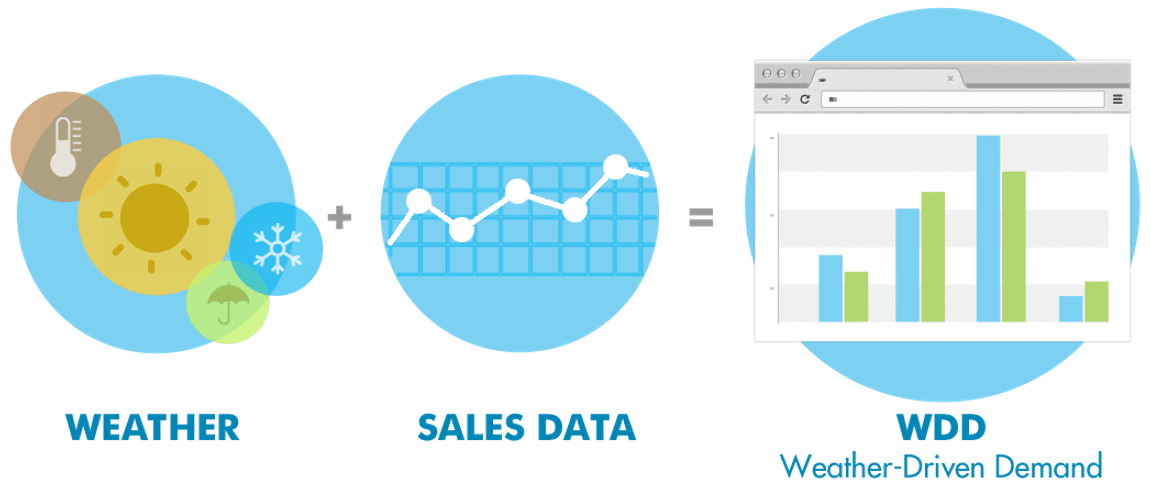What is Weather-Driven Demand?

Consumer-facing businesses have long understood that the weather conditions outside directly and often dramatically influence the daily activities and purchasing decisions of their customers. For over 20 years, Planalytics has helped retailers, restaurant chains, and consumer product & service companies “put a number” on these always-present sales impacts through a metric called Weather-Driven Demand.
Weather-Driven Demand or WDD isolates and precisely quantifies the impact that the weather alone has on overall transactions or demand for specific products and services. Positive WDD metrics indicate when, where, and how much favorable conditions increase demand, while negative WDD calculations show demand decreases due to unfavorable weather.
To identify and measure the relationships between weather and demand, the weather impact analysis process combines multiple years of product and store- or market-level sales history with corresponding weather data by time period (day or week) and geography. Trend, seasonal, and residual components of the historical sales data are identified and additional variables such as price and promotions are factored in to isolate the weather’s influence on demand.
Planalytics’ Weather-Driven Demand transforms temperatures, rainfall, and other meteorological data into the appropriate business context for each company. WDD values are provided as percentages, unit volumes, or in dollars/euros/etc. enabling companies to easily incorporate weather impacts into existing processes, reporting, and technology solutions.
Depending on the business, WDD metrics may be provided as:
- comps/versus LY or compared to normal
- daily or weekly (with aggregations up to months, quarters, and years)
- for total/division/department transactions, categories, and lower product/service hierarchy levels
- by store, zip/postal code, metro market, region, and country
- for stores or online/e-commerce
Contact us to learn how Weather-Driven Demand can help your company “put a number” on the weather’s impact and proactively manage the never-ending parade of opportunities and risks that are created across the business.
